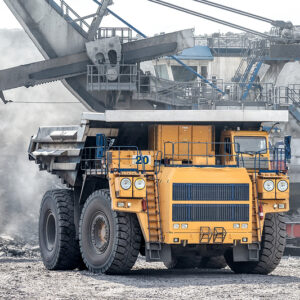Stepped-up efforts by a coalition of Native American tribes and environmental groups to curtail hard rock mining highlight the nation’s growing need to recycle critical and other metals as an alternative to extracting raw materials from the earth.
At issue is the environmental damage that results from hard rock mining when there are readily available and recyclable sources of metals and minerals within components of used cell phones, computers, monitors, and consumer batteries.
“For far too long, mining companies have had free rein to decimate lands of cultural importance to tribes and public lands at enormous cost to people, wildlife. and these beautiful wild places of historic and cultural significance. The harm is undeniable, severe. and irreparable,” the groups recently wrote to the U.S. Department of the Interior, in a bid for stricter rules on hard rock mining.
“Seizing that opportunity requires policies that prioritize metals recycling and reuse over new mining,” they added.
Similarly, tribes in Nevada allied with several state and national organizations are working to head off the development of what would be the largest lithium mine in the U.S. due to the region’s cultural significance and the potential environmental damage. Lithium is an essential ingredient in the batteries that power electric vehicles and mobile phones, but it also can be recycled from spent batteries.
Hard rock mining, according to the U.S. Environmental Protection Agency (EPA), is “the extraction of metals (e.g., copper, gold, iron, lead, magnesium, silver, uranium, zinc) and non-fuel minerals (e.g., asbestos, gypsum, phosphate rock, sulfur) by surface or underground mining methods.”
The metals and minerals are necessary for a modern economy, and they are valuable. According to the Government Accountability Office, in 2018 alone the value of extracted hard rock minerals worldwide was valued at $981 billion.
But the big problem is the pollution the mining process often causes.
The U.S. Geological Survey notes that “thousands of historical hard-rock (gold, copper, and zinc) mines exist across the Western United States. Mine dumps, tailing piles, and unmined mineral deposits can contaminate the surrounding watershed when weathering of exposed minerals causes acid drainage and metals-enriched waters.” The EPA estimates such mining has polluted the headwaters of approximately 40 percent of Western U.S. watersheds.
Because efforts by the coalition of tribes and environmental groups for tougher rules could take several years to come to fruition, they see the immediate value of recycling what is known as non-ferrous metals and the extensive environmental benefits.
For starters, nonferrous metals like gold, aluminum, and copper do not degrade or lose their chemical properties in the recycling process, which allows them to be recycled an infinite number of times.
Recycling also requires much less energy than mining – 85 percent less for copper and 95 percent less for aluminum – thereby curtailing greenhouse gas emissions.
There is no shortage of nonferrous metals available for recycling from a wide array of consumer, commercial and industrial sources. According to data from the U.S. Geological Survey and the U.S. Commerce Department, the United States recovered more than 9.2 million metric tons of used nonferrous materials – with a value of $34 billion – in 2018 alone.
In an extensive assessment of hard rock mining released in June, the GAO concluded that hard rock minerals play a significant role in the nation’s economy, “but extracting these minerals disturbs land and creates the potential for serious public health, safety, and environmental hazards.”
In an age when environmental concerns are paramount, a robust domestic recycling industry already is providing a cleaner and safer alternative that can reduce the need for mineral extraction from the earth.

